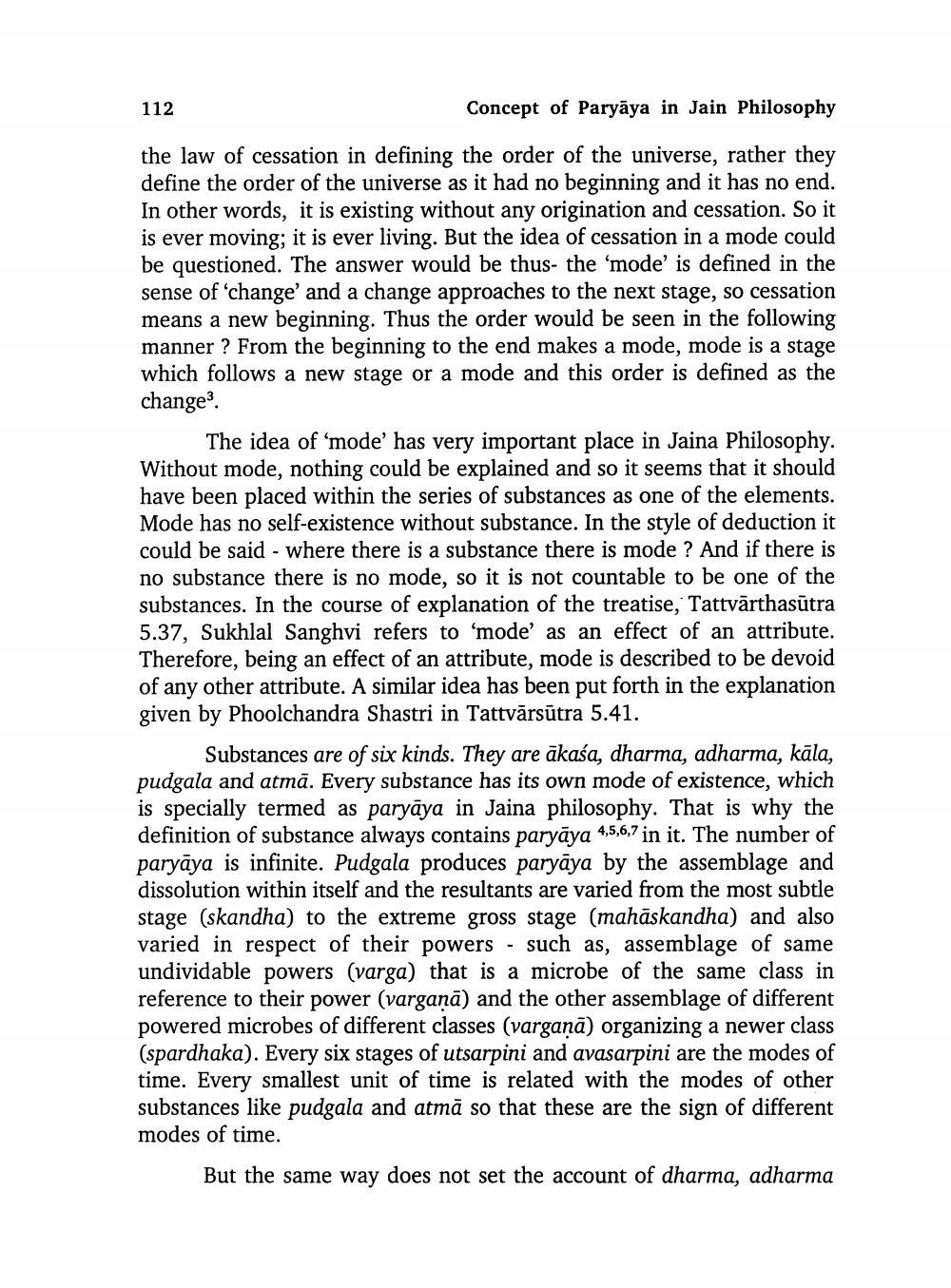________________ 112 Concept of Paryaya in Jain Philosophy the law of cessation in defining the order of the universe, rather they define the order of the universe as it had no beginning and it has no end. In other words, it is existing without any origination and cessation. So it is ever moving; it is ever living. But the idea of cessation in a mode could be questioned. The answer would be thus- the 'mode' is defined in the sense of 'change' and a change approaches to the next stage, so cessation means a new beginning. Thus the order would be seen in the following manner ? From the beginning to the end makes a mode, mode is a stage which follows a new stage or a mode and this order is defined as the change. The idea of 'mode' has very important place in Jaina Philosophy. Without mode, nothing could be explained and so it seems that it should have been placed within the series of substances as one of the elements. Mode has no self-existence without substance. In the style of deduction it could be said - where there is a substance there is mode ? And if there is no substance there is no mode, so it is not countable to be one of the substances. In the course of explanation of the treatise, Tattvarthasutra 5.37, Sukhlal Sanghvi refers to 'mode' as an effect of an attribute. Therefore, being an effect of an attribute, mode is described to be devoid of any other attribute. A similar idea has been put forth in the explanation given by Phoolchandra Shastri in Tattvarsutra 5.41. Substances are of six kinds. They are akasa, dharma, adharma, kala, pudgala and atma. Every substance has its own mode of existence, which is specially termed as paryaya in Jaina philosophy. That is why the definition of substance always contains paryaya 4,5,6,7 in it. The number of paryaya is infinite. Pudgala produces paryaya by the assemblage and dissolution within itself and the resultants are varied from the most subtle stage (skandha) to the extreme gross stage (mahaskandha) and also varied in respect of their powers - such as, assemblage of same undividable powers (varga) that is a microbe of the same class in reference to their power (vargana) and the other assemblage of different powered microbes of different classes (vargana) organizing a newer class (spardhaka). Every six stages of utsarpini and avasarpini are the modes of time. Every smallest unit of time is related with the modes of other substances like pudgala and atma so that these are the sign of different modes of time. But the same way does not set the account of dharma, adharma




